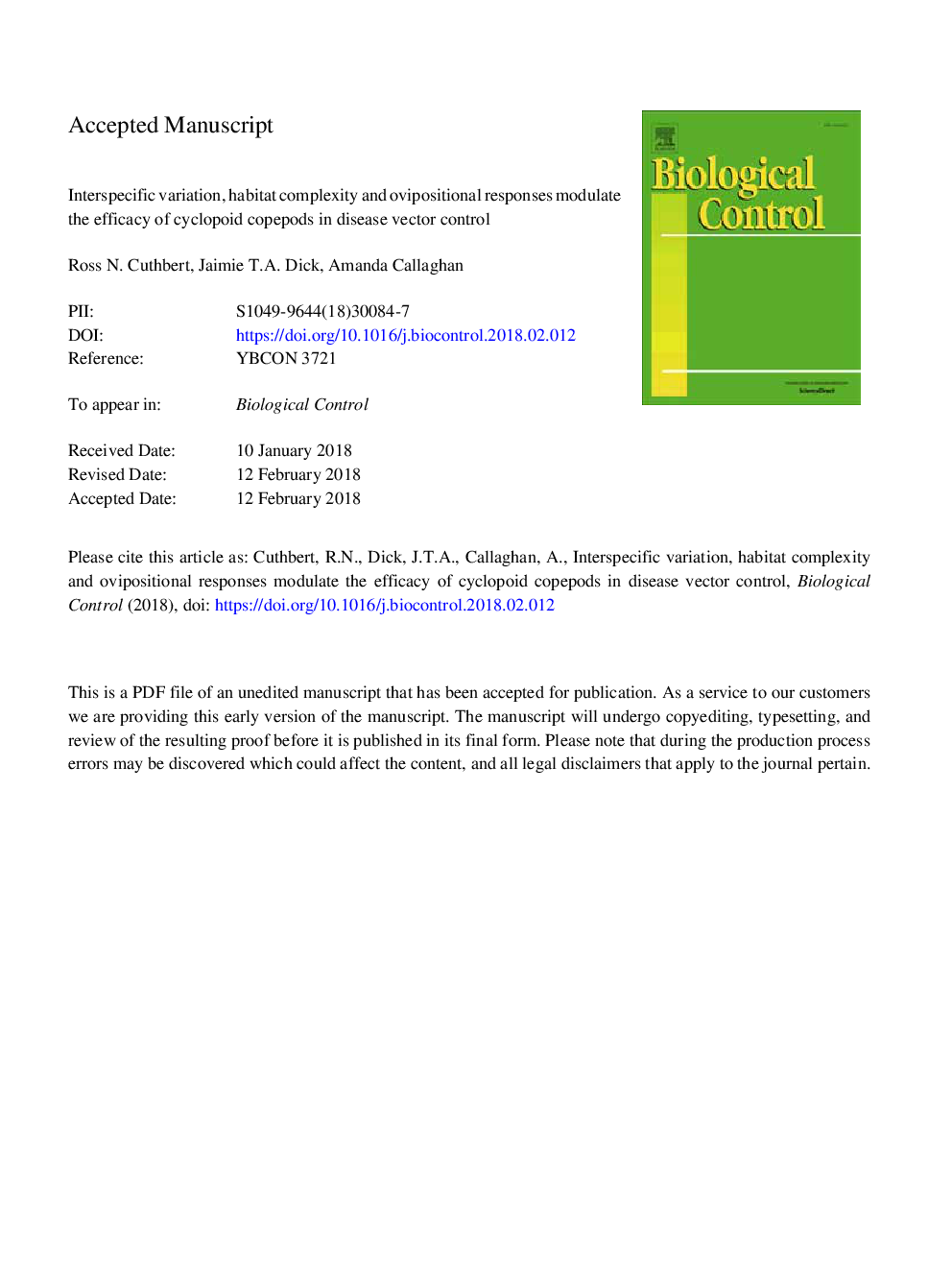ترجمه فارسی عنوان مقاله
تنوع بین گونه ای، پیچیدگی زیستگاه و پاسخ های تخمک گذاری، اثربخشی کاپ اپد های سیکلوپوئید را در کنترل بردار بیماری کنترل می کند
عنوان انگلیسی
Interspecific variation, habitat complexity and ovipositional responses modulate the efficacy of cyclopoid copepods in disease vector control
| کد مقاله | سال انتشار | تعداد صفحات مقاله انگلیسی |
|---|---|---|
| 160339 | 2018 | 40 صفحه PDF |
منبع

Publisher : Elsevier - Science Direct (الزویر - ساینس دایرکت)
Journal : Biological Control, Volume 121, June 2018, Pages 80-87

